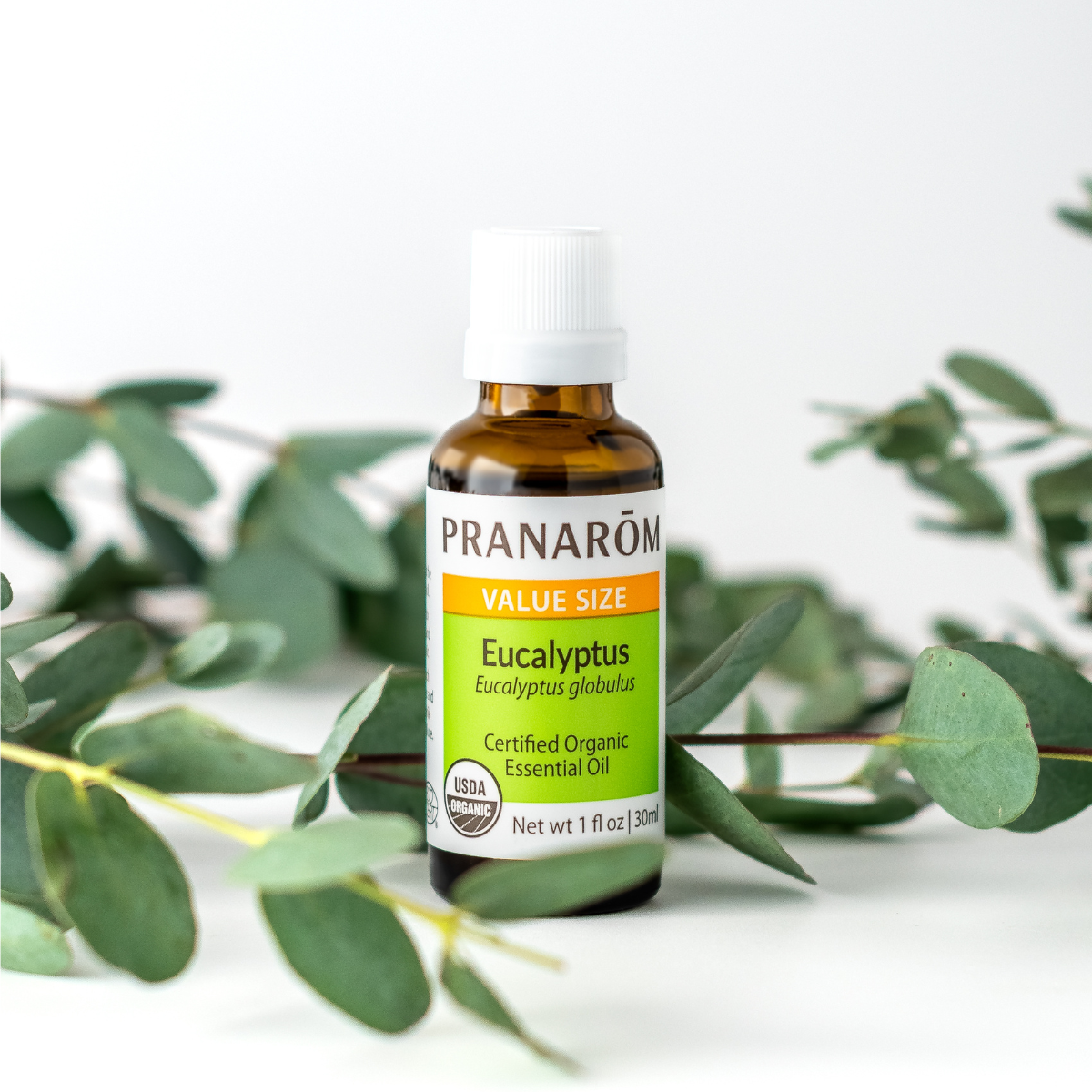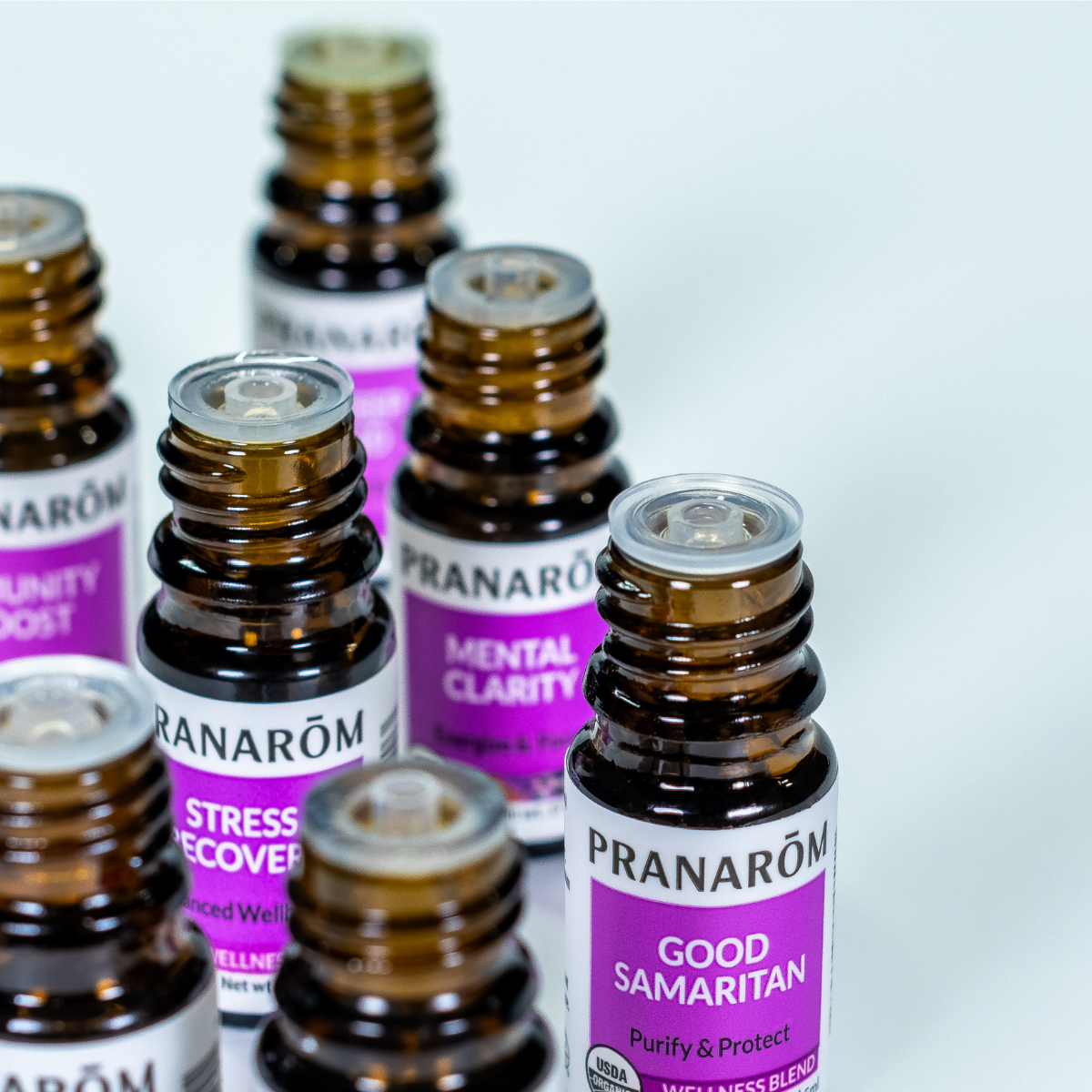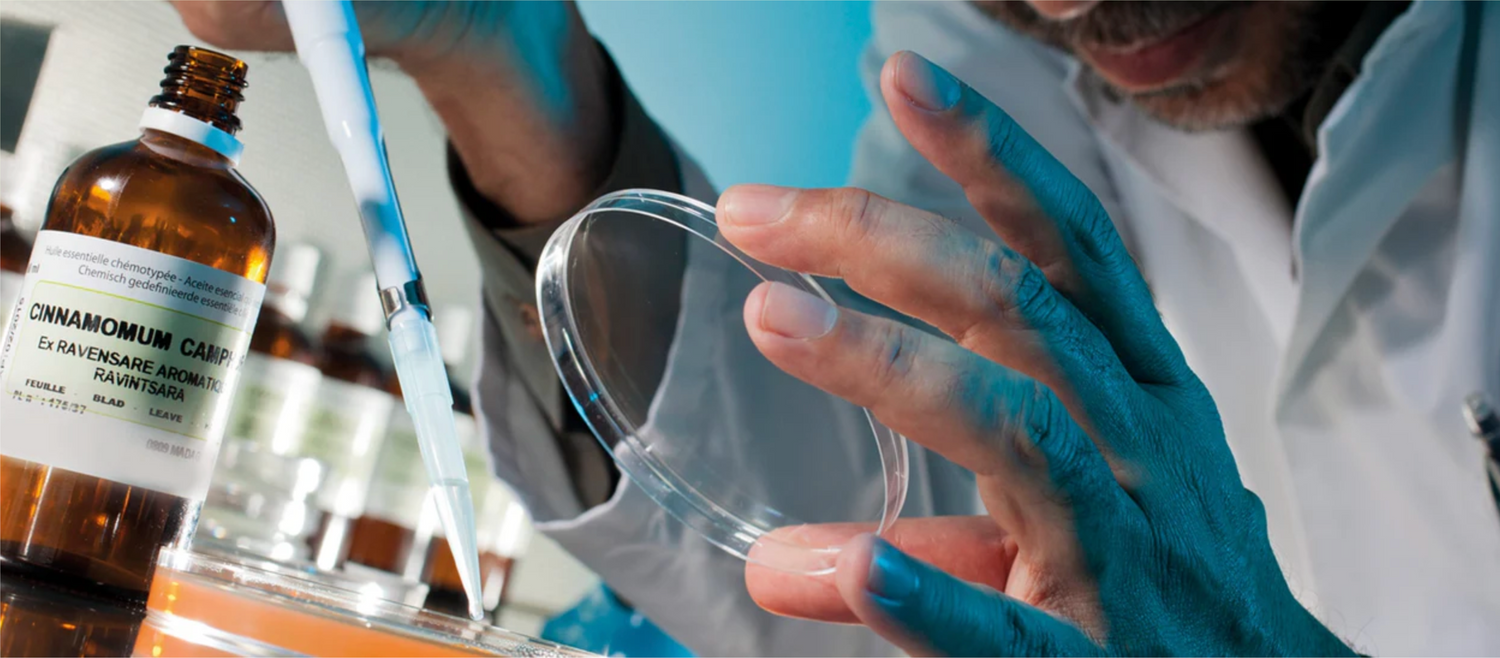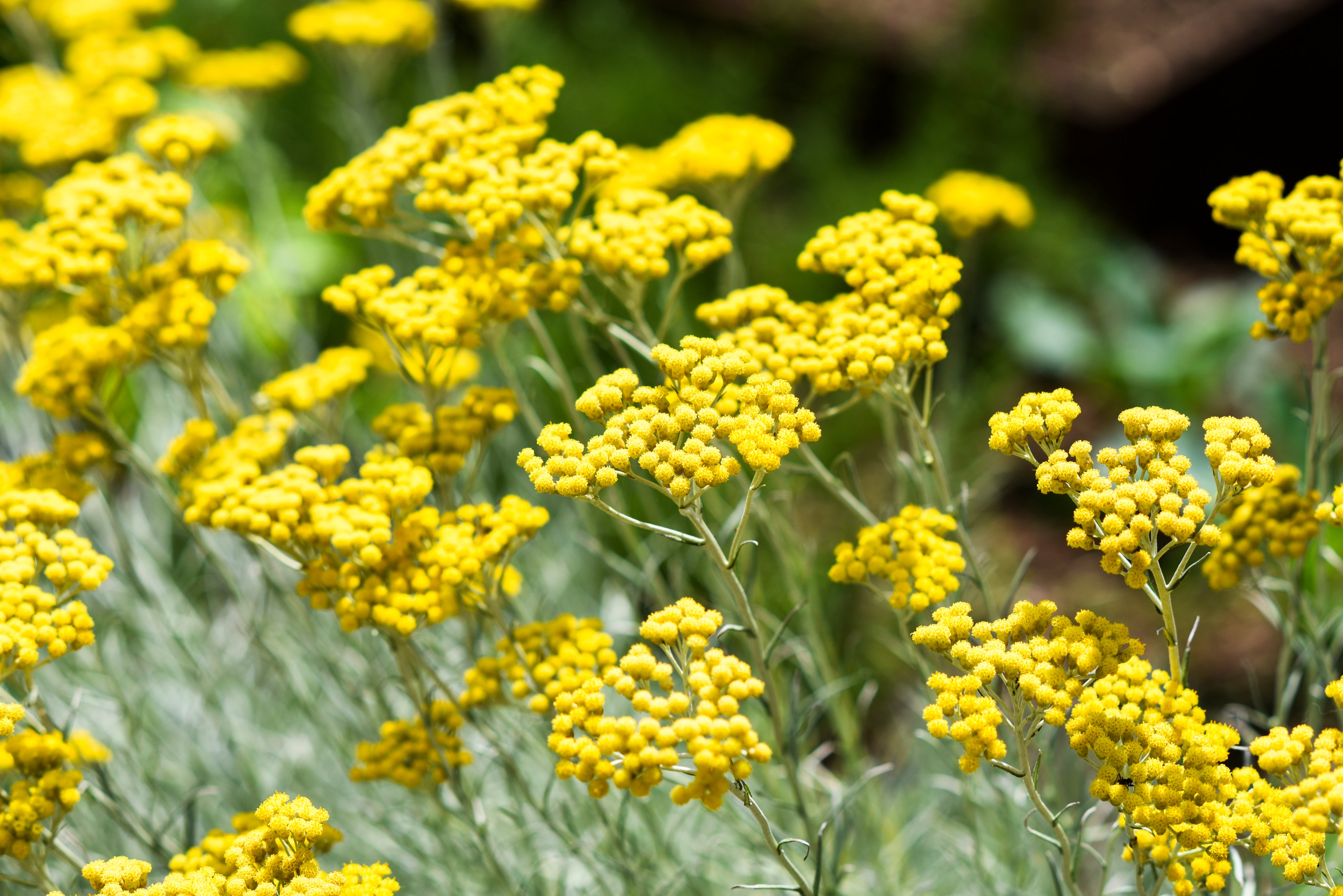In this article, you'll discover the fundamentals of aromatherapy and essential oils: definitions, origins, and basic functions. Ready to learn more?
What is aromatherapy?
Aromatherapy is the art of healing with essential oils to harmonize physical and mental health. Essential oils are used to reinforce the natural self-healing process. It's a natural method based on the activity of the biochemical molecules of essential oil chemotypes.
What is scientific aromatherapy?
Scientific aromatherapy, sometimes called aromatology, is the study of essential oils. It's a science based on rigorous methodology and solid scientific data, confirmed by numerous laboratory tests.
What are "essential oils?"
Essential oils are complex, concentrated liquid extracts obtained through steam distillation of aromatic plants or plant organs (such as flowers, leaves, wood, roots, bark & fruits). Essential oils contain only the distilled essence of aromatic plants. They're made up of around a hundred terpenic and aromatic molecules that are particularly active and effective for everyday health.
What is an "essence"?
An essence is an oil obtained by a simpler method: expression. This involves mechanically breaking the "essence pockets" of fresh citrus peel to collect the essences. This technique is only valid for certain zests such as those of lemon, mandarin, orange, bergamot, and grapefruit. It is important to note that our lime essential oil is not included in this category as it is distilled.
Where do essential oils come from?
In plant biology, the compounds produced by plants are subdivided into 2 groups of molecules: primary metabolites and secondary metabolites.
- The molecules in the first group are found in all plant cells. Called "primary" because they're essential for the life of the plant, they include sugars, lipids, proteins, and amino acids.
- The molecules in the second group have only a limited distribution in the plant and are not part of the cell's basic materials. These compounds are normally found only in particular tissues or organs and at specific stages of development. They're secondary because they don't appear to be essential to plant growth—even though their action is decisive for the plant's adaptation to the natural environment: protective agents against physical stress, defense against external aggression, pigmentation of the plant to capture solar energy, or conversely, to protect the organism against the harmful effects of solar radiation.
Secondary metabolites have 3 main classes:
- Alkaloids include morphine, caffeine, nicotine, cocaine, and atropine.
- Terpenes are the largest category of secondary metabolites, with over 22,000 molecules. They include plant hormones, pigments, sterols, heterosides, and a large number of essential oils.
- Phenolic substances (aromatic compounds) such as flavonoids, tannins, lignin, and coumarins.
Essential oils and essences are therefore secondary metabolites belonging mainly to the terpene class, but also to the aromatic compound class. There are currently around 3,000 known essential oils, of which some 350 are commercially used, mainly for the pharmaceutical, aromatherapy, cosmetics, and perfume industries.
Essential oils have many biological functions:
- Natural ecological components thwart would-be herbivores while respecting the environment.
- They encourage pollination by attracting non-harmful insects.
- They work as a natural insecticide to ward off danger.
- Lastly, they're therapeutic for the health and well-being of humans and animals. Secondary metabolites are particularly appreciated for their purifying and calming properties.
The use of essential oils in cosmetics is vast and varied, the agri-food sector is increasingly interested in essential oils for food preservation, and now even veterinary medicine has begun adopting these oils to help animals subjected to environments that expose them to infection.










